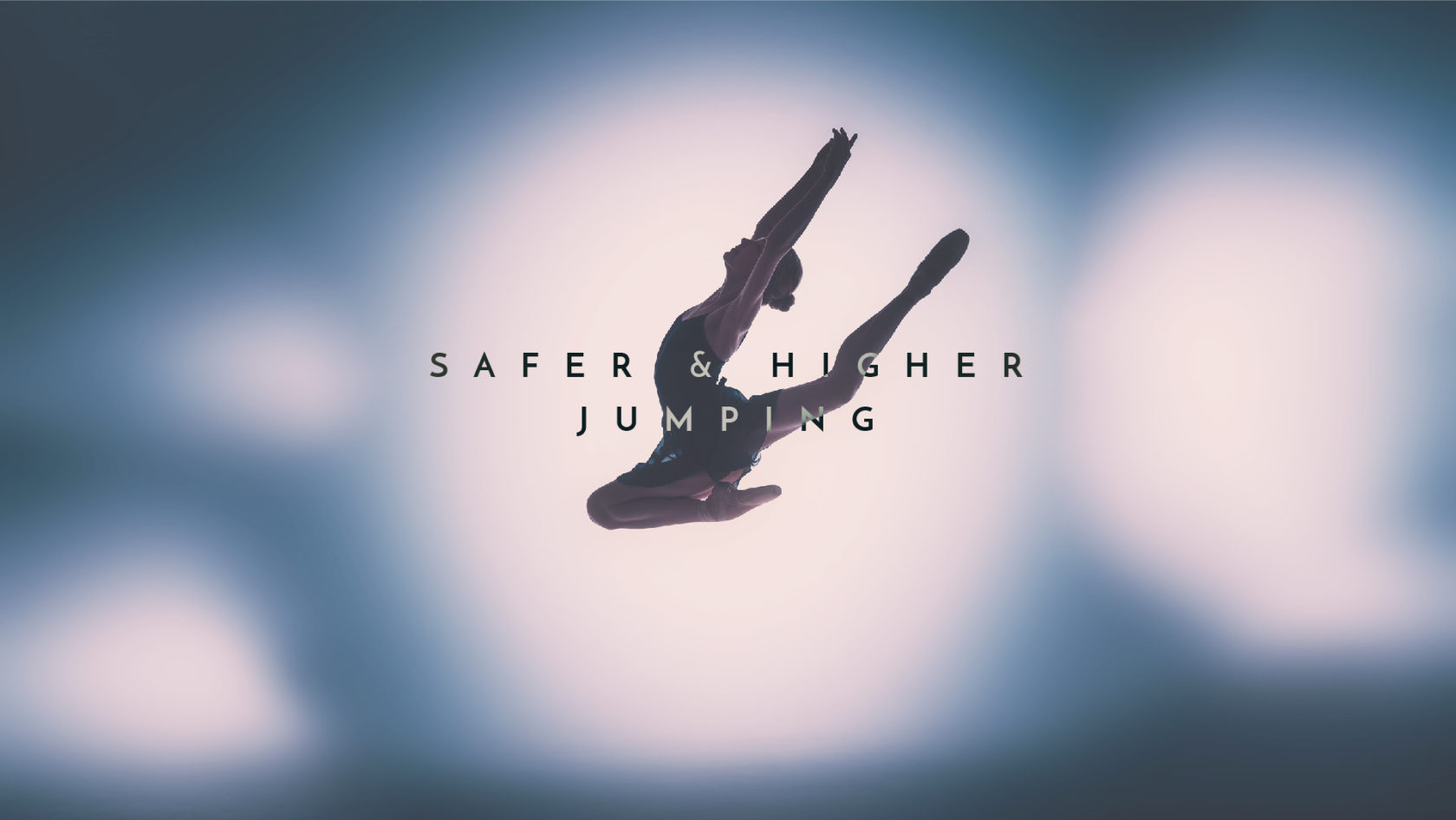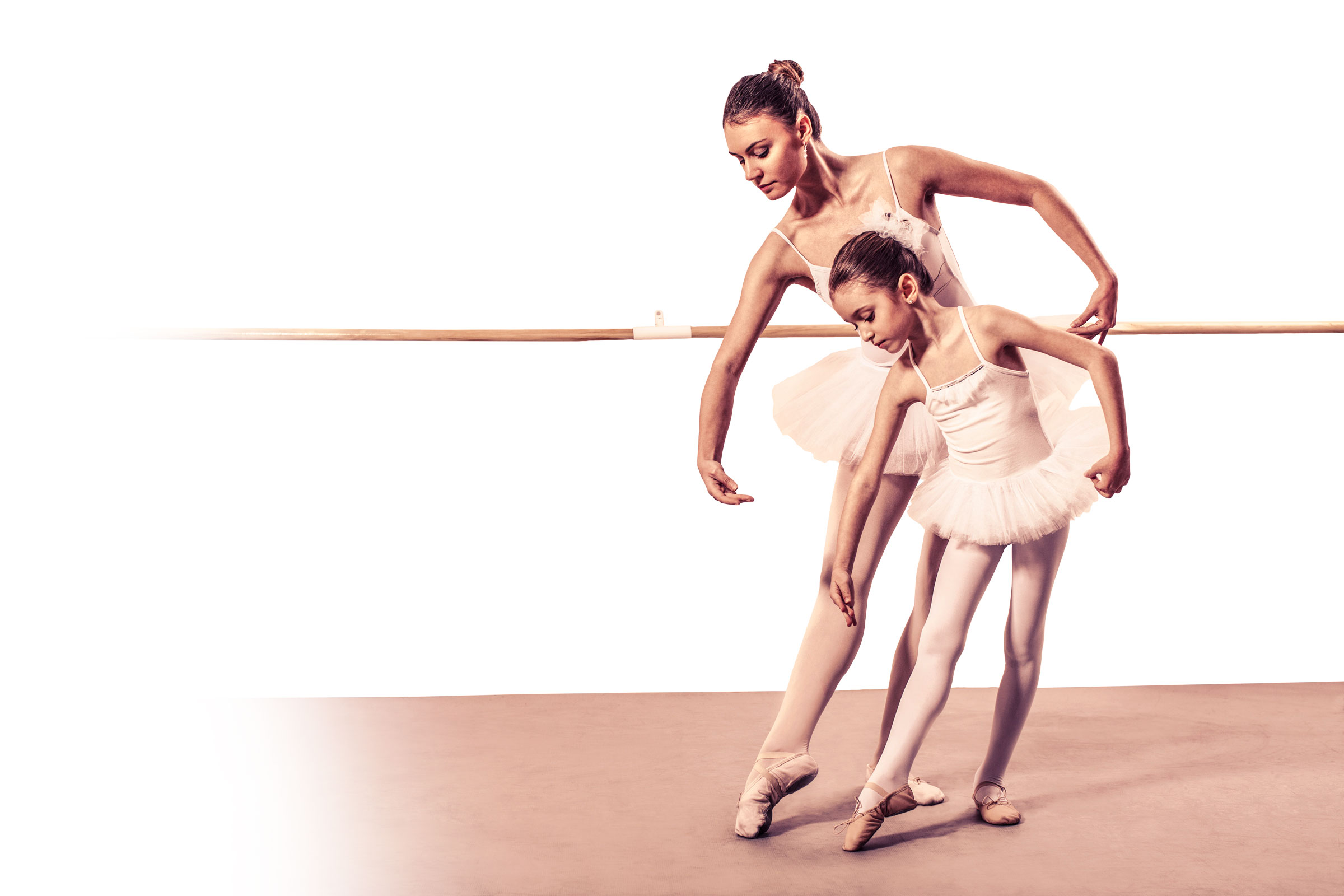Everyone wants to jump higher and no one wants to get hurt. But I know I am not the only one who encounters students flailing themselves into the air with nary a care about how they get there and how they get back down. Just watching them causes pain to shoot through my joints.
To provide a safer foundation for the jump while also building height, I follow these steps:
1. It all starts with plié.
How many times has it been said? SO very many. But there is a reason for this, and that reason is because it is TRUE! A jump is only as safe and strong as the plié that comes before it. Yet somehow it is not uncommon for students to use almost no plié at all while jumping. How can this even be? I have no answer for that. But what I do know is that we absolutely must insist on the proper use of plié. Not just a bending of the knees—although, that is a start (!)—we need a technically-sound plié with all the juicy quality that comes along with it. I don’t mean we need a large plié before every jump. The depth of the plié will vary depending on the type of the jump, the speed of jump, the individual dancer, etc. No matter the depth, the correct quality must be in place. The lift, the activation of the rotators, the energy in the expanding simultaneously down and up. All of these things must exist if the dancer is going to get up in the air with grace, agility, and care.
2. The toss up must be focused and combined with a push down.
Everyone is making all these grand attempts to get up, up, UP! But all that energy is being wasted. Literally, it is just being thrown up into the air with very little purpose; and just as quickly as it is thrown up, it evaporates. The jump is over before it ever really happened. What we need instead is to create a jump that the energy clings to. We can get this by determining which parts of the body will toss up into the air and which parts of the body will push down into the ground. This will not be the same in every jump. A grand jeté will utilize the parts of the body differently than a sauté échappé. But focusing the energy in such a way will bring more height to the jump while properly engaging the muscles.
3. Arrive at the top of the jump lightning fast.
There should be no climbing to the top. Once the bottom of the plié has been reached, the body quickly shifts into the jump and all gears are in place to move through the path to the top as quickly as possible. Just as we don’t dilly dally towards the top of a relevé for a pirouette, we don’t casually stroll to the top of a jump. It must hold an attack unlike any other.
4. Pull down from the top, rather come down.
On the descent, there should be an active pull to get down from the air. Instead of allowing gravity to do its thing, take control back and bring the jump down yourself. This will maintain proper use of the muscles and ensure a much lighter touch down. Once the toes have made contact with the floor, continue pushing down into the ground to arrive at a plié of appropriate depth.
The point in all these steps is to create ways to keep the energy shooting both down and up the entire time, while creating a more dynamic jump which catapults the jump higher into the air. It requires a good deal of time to build this type of awareness. Beginning these techniques in a simpler format with younger students will help develop safe jumping habits that can then transform their jumping into the brilliance we love, known as grand allegro.
Related Articles




Comments
No comments for this post.
Add Comment